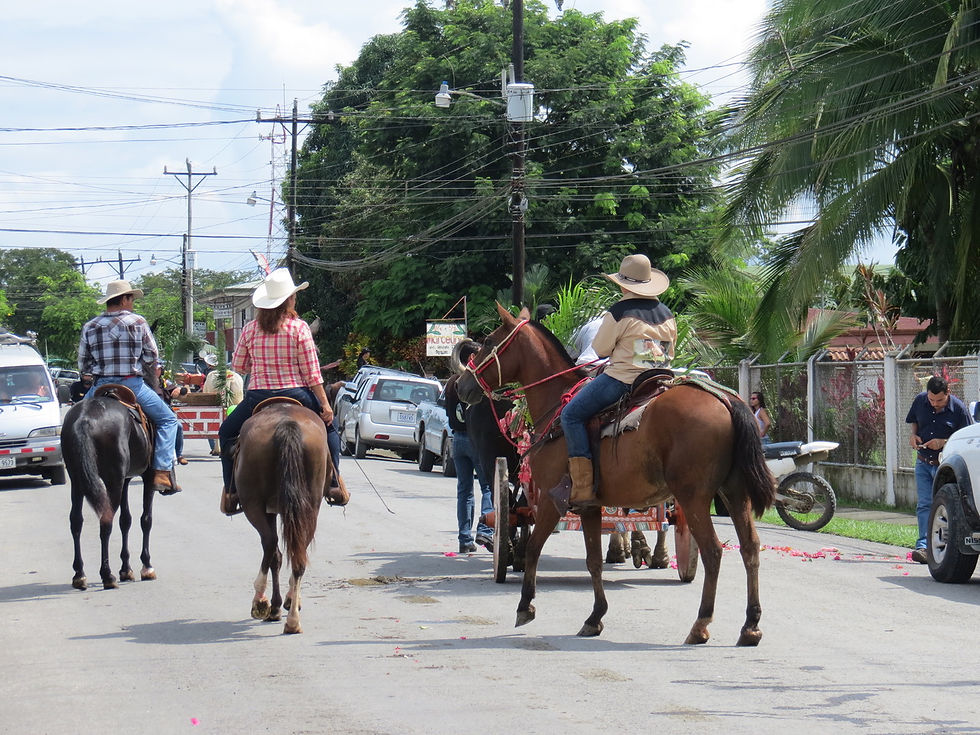Culture and Customs
- Ojo del Mar

- Jul 1, 2019
- 3 min read
Updated: Jul 10, 2019
With all the animal, bird, plant and marine life, it's sometimes easy to miss: you’re visiting the home of all the Osa’s inhabitants.

Here are some things to know about the culture and community you will find during your visit, so you can be a good guest during your time here.
The Osa is lightly populated - some say fewer than 5,000 people live here year-round - but its residents include an eclectic mix of Ticos (the local term for Costa Ricans), American and European expatriots, and indigenous communities. Despite their diverse origins, we share a common goal: increase knowledge and stewardship of this untamed, endangered place - for both our visitors and those who call the Osa home.
Culture
Ticos are generally friendly and easy-going. Costa Ricans are proud of their long-standing history as the most stable democracy in the region, and in their pioneering environmental policies.
The Osa is still a remarkably remote part of Costa Rica. Fewer than 3% of the tourists who visit the country make it to the Peninsula - so despite the increase in ecotourism, much of the Osa retains its rural vibe. The mix of Ticos, expatriates, and short-term residents like field researchers and conservationists contributes to a maverick spirit.
Put in a Good Word
Many residents of the Osa are not fluent in English or other languages-- so learning a few words and phrases in Spanish (especially words like hello, thank you and please!) will go a long way toward making your visit a positive one. Most Ticos appreciate your attempts to speak Spanish, and you can help them with their English - it’s a win-win!
¡Pura Vida!
Simply translated, this common saying means “pure life” or “simple life” -- and if you are going to learn only one Spanish phrase before heading to Costa Rica, this multi-purpose one would be it. Costa Ricans use this term in all sorts of situations: to say hello, to say goodbye, or as an answer to “thank you.” It also conveys American phrases like no worries and it's cool-- as well as any number of other ideas that reflect that life is good.
Tipping
Generally, a service charge is added to things like restaurant bills, so tipping is not necessary except for out-of-the-ordinary service. However, we encourage you to tip people who are working solo - tour guides, maids, drivers, porters and others who might provide you excellent service.
At Ojo del Mar, we suggest you leave a tip at the end of your stay - it will be divided equally amongst our staff. We’ve found that $100-150 per week (about $20 per day) is fairly typical for our guests.
Legal Details
Costa Rica has passed a strict law prohibiting any smoking in public places. To comply with this law, most bars, restaurants and lodges, including Ojo del Mar, have a non-smoking policy: ‘Not here please!’.
Power, Water and other Resources on the Osa
A flashlight is essential, at Ojo del Mar, on the Osa and all around Costa Rica. There are some areas of the Osa that do not have electricity, or for the power to go out during the rainy season. Many streets are not brightly lit, and there often aren’t sidewalks.
Ojo del Mar is entirely off-the-grid, meaning we create all our own electricity and manage our own environmental systems, such as water and waste. This is partly because we are so far away from towns and cities, but it is also because it is better for the Earth! No matter where you are on the Osa, be aware of your use of resources like electricity and water, and help others with gentle reminders to turn off lights, conserve water and tread lightly.




Comentários